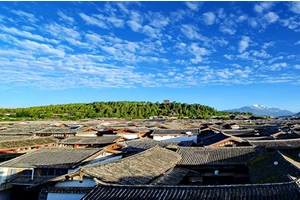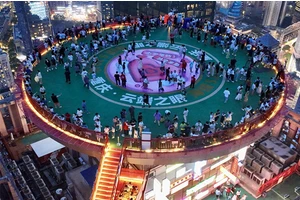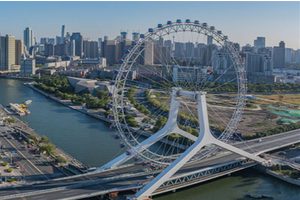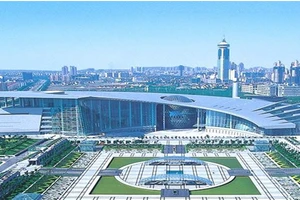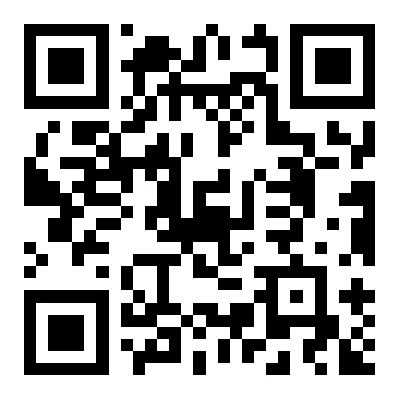Panoramic virtual tourism
Insufficient content richness, interactivity needs to be improved, and security issues.
1. Insufficient content richness: Although the Panorama and VR videos are provided by the Panorama Virtual Travel Website, these contents are not enough to meet the needs of all users. Some users want to know more about tourist destinations.
2. Interactivity needs to be improved: Although the panoramic virtual travel website provides a variety of interactive ways, such as VR glasses, touch screen, etc., these interactive ways are not familiar to all users. Some users prefer to interact in other ways.
3. Security: Virtual travel websites need to protect users' personal information and data security. The inadequate security measures of the virtual tourist website of Panorama will lead to the disclosure of users' information and affect users' trust and experience.
Tourism is beautiful, but it can't be beautiful in a crowded state. The National Day holiday that just passed is now a long holiday for many young people who are afraid to go out. As a populous country, China is afraid of "thinking of going together" when traveling. After all, everyone has no time at ordinary times, so we can only take advantage of the holidays to travel and relax. The result is that every year, the major scenic spots are crowded, only looking at people and not looking at the scenery. Inevitably, it is disappointing, and it also makes many people who want to travel "look at the ocean and sigh". Moreover, the biggest problem of tourism lies in the serious "lemon market", and the serious asymmetry of information leads tourists to keep saying "it is better to see the scenery than to listen to it".
In this regard, a new tourism industry came into being: "VR+ tourism". As the name implies, it is a tourism industry made of VR. Through VR equipment, people can be in the scenic spots and have a sensory tour without leaving home. Can VR tourism improve the serious tourism industry in the "lemon market"?
VR+ travel in various ways.
VR+ tourism is not only a mode for people to see the landscape. According to the existing examples of VR+ tourism in the market, it can be roughly classified into three categories:
1. Virtual tourism in the form of orthodox VR
This is to use VR to "travel" and reproduce the VR content of the scenic spot through hardware devices such as VR head display, so that people can stay in the scenic spot without leaving home and have a sensory experience of tourism. The more representative ones are the Third Star Ball and the Forbidden City Exhibition. The third star ball provides VR videos of domestic scenic spots in the form of one attraction and one APP, while the Palace Museum provides users with VR videos of different exhibits in different exhibition halls in the form of one theme. Even if you miss the offline exhibition, you can watch the exhibition through the APP. This is also the mode with the largest number and the largest proportion of VR+ tourism.
2, cut into additional tourism projects, for the real type of tourism services.
The most popular of this kind of VR+ tourism is the VR+ hotel, which serves the actual tourism industry. By applying VR technology to hotels, tourists can preview the accommodation conditions of scenic spots in advance. Compared with traditional photos, the three-dimensional space can more systematically show the actual situation of the hotel, which is convenient for tourists to choose. In addition, there are VR of streets and routes around scenic spots, all of which serve the actual tourism industry. The representative of this kind is Expedia in the United States. The company provides consumers with the service of choosing hotels by VR, and its senior VP in charge of products and design said: VR can change the way people make online decisions, allowing users to "enter" hotel rooms and view supporting facilities.
3. Create a tourism project with VR.
This is to build a tourism and play project with VR, which is similar to the feeling of a large-scale VR offline experience store, but with a larger scale, a more complete system and a corresponding play system. The VR theme park is a representative one. As early as many years ago, Disney and other theme parks have begun to try to make virtual play projects achieve realistic effects through various technologies. During the Golden Week of May 1 this year, VR theme projects were piloted in Sanya Luhuitou Scenic Area, etc., and all of them began to use VR technology to make people's play more interesting and unforgettable.
Of these three kinds of VR+ tourism, the first one is the mainstream, which occupies the vast majority of the VR tourism market. Virtual tourism is mainly derived to cater to people who don't have time. What competition do these VR+ tours have in today's tourism industry?
VR+ tourism meets market demand.
VR+ tourism mainly cuts into the market in terms of time and content.
VR+ tourism caters to the "fragmentation time" and is relatively cheap. The two elements of tourism are money and time. Compared with real tourism, virtual tourism involved in VR+ tourism is much cheaper. Even without equipment, you can spend a small amount of money to try the offline experience store. At the same time, for today's public, "fragmentation time" is a common phenomenon. Due to work, family, study and other factors, people often don't have a complete holiday for a few days or a week, sometimes only a few hours, or a half-day or a day's rest. This fragmented and fragmented time can't support tourists to take an actual tour in many cases, but it is very suitable to cater to this "fragmented time" and virtual tourism with VR+ tourism. Users often only need an afternoon to go to the experience store for a virtual tour. If they have the conditions to have VR equipment, they can even take a virtual tour in an hour or two in their leisure time.
VR+ tourism is rich in content and playability.
The content of VR+ tourism is another attractive factor, not only the content of ordinary scenic spots, but also the introduction and explanation of VR+ tourism will be more detailed and perfect because it is pre-recorded content. Moreover, people in summer can also see the snow scene in winter, and with the continuous progress of technology, even special projects such as ancient tours, cosmic tours, movie scenes tours, animated scenes tours, scenic spots destroyed by war or natural disasters, and so on. For VR theme parks, using VR technology can provide a more novel experience for people who come to the theme park to seek excitement or fun, and also provide an experience opportunity for ordinary users who cannot afford to buy expensive VR equipment.
The development of new things itself is to solve the corresponding needs. VR+ tourism caters to the market demand and solves the needs of some users who don't have time and money for actual tourism, but want to have a tourism experience.
However, VR+ tourism is not a real tourism after all, nor can it completely replace tourism. People take a virtual tour in their spare time. Although they have a travel experience, they are often still wanting more. Just like we ate a "seafood-flavored" instant noodles, although it tasted like seafood, it was far from being really seafood. At this time, would we want to have another chance to really eat seafood? I think even if I don't really go, I will mostly think about it. This is its advertising value. VR+ tourism allows people to experience a virtual tour roughly in their leisure time, which brings more impulse to travel to this scenic spot, so as to stimulate the development of real tourism.
In addition, there are some small aspects, such as using VR+ tourism to train tour guides, so that they can conduct practical drills at school and so on. Then VR+ tourism has such advantages and development value, can the future be smooth sailing? After all, VR+ tourism is not a real way to travel, and tourism still needs to really go out. The people and scenery you meet on the road can't be replaced, which VR can't bring. But VR can do other things, such as looking at local characteristics in advance, and it can also be used in the way of auxiliary travel such as booking a hotel VR room.


